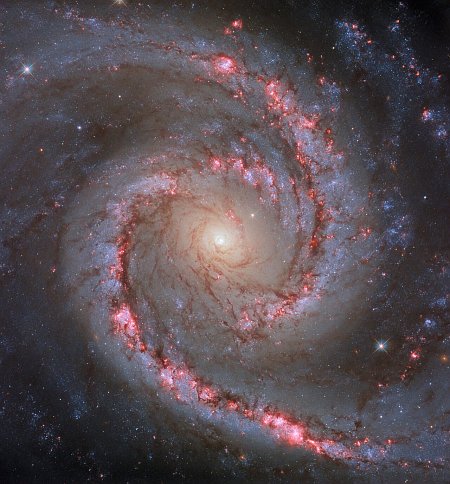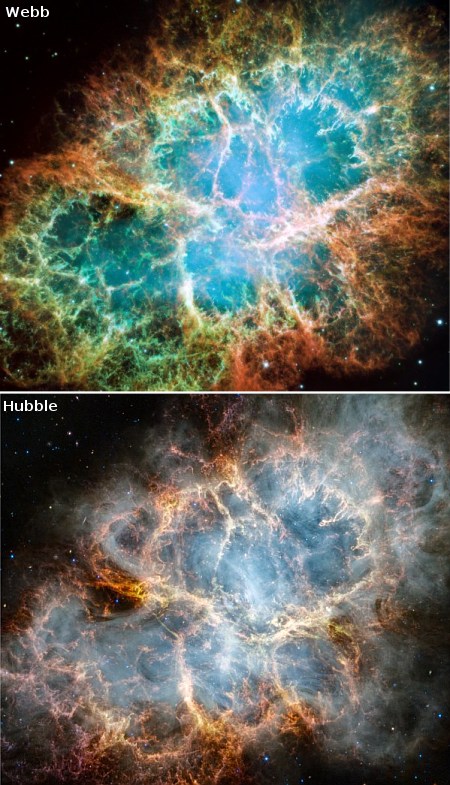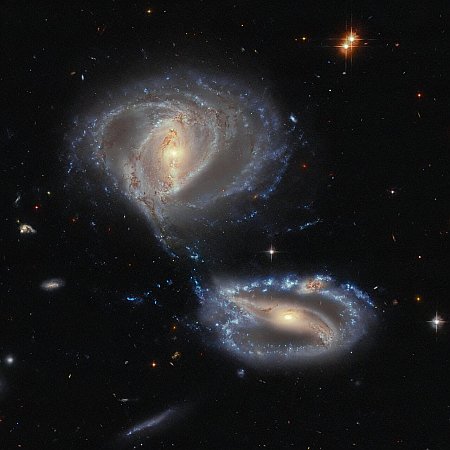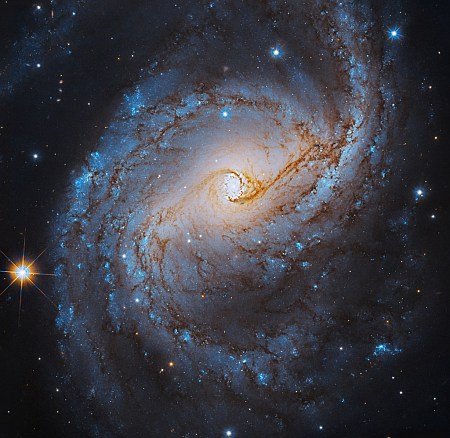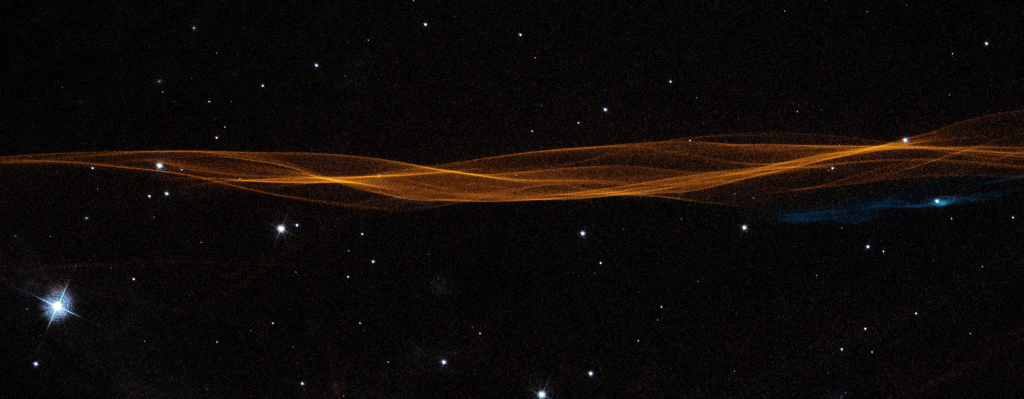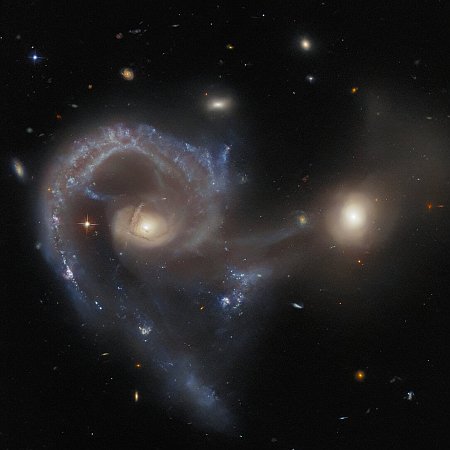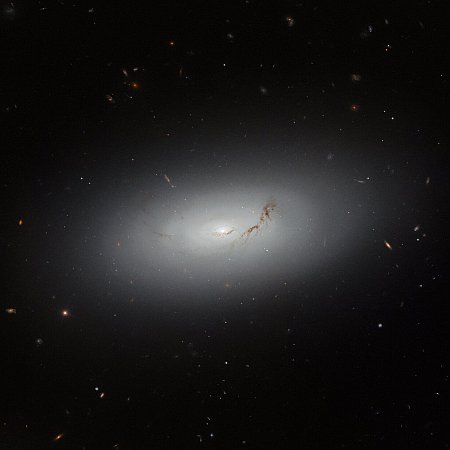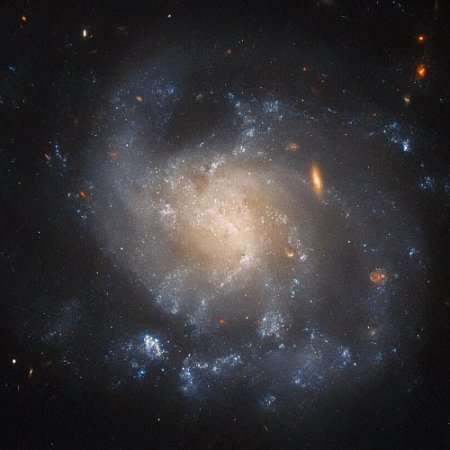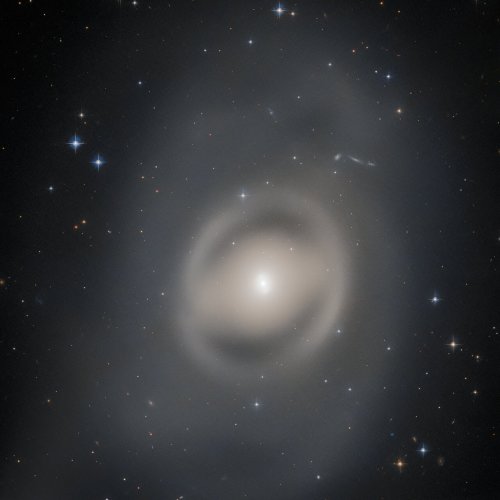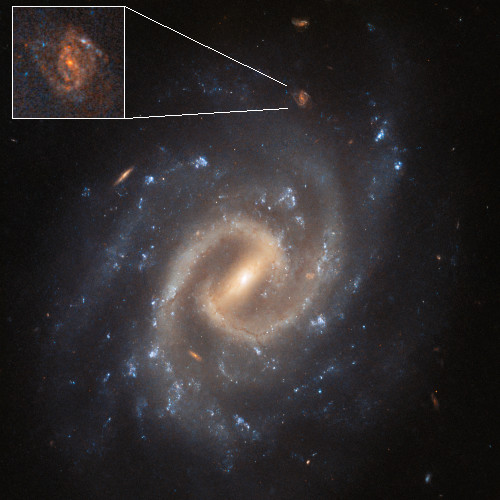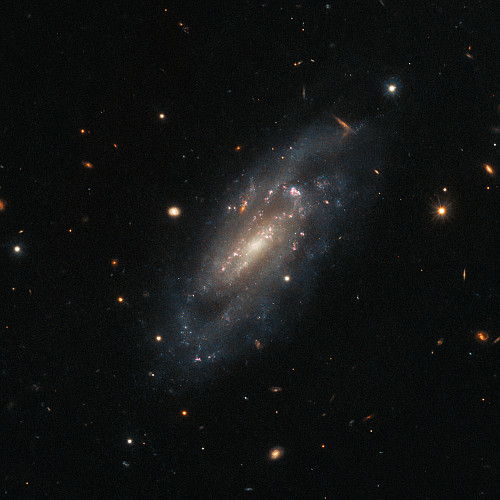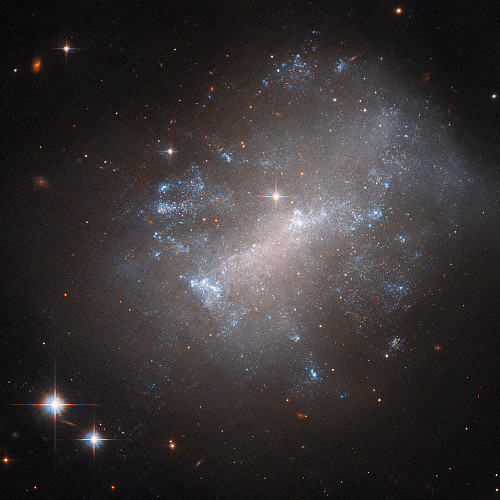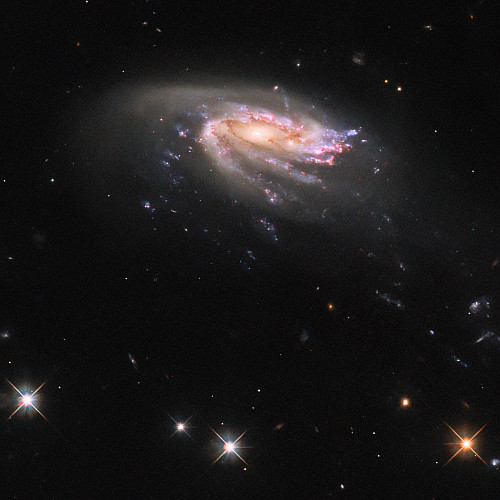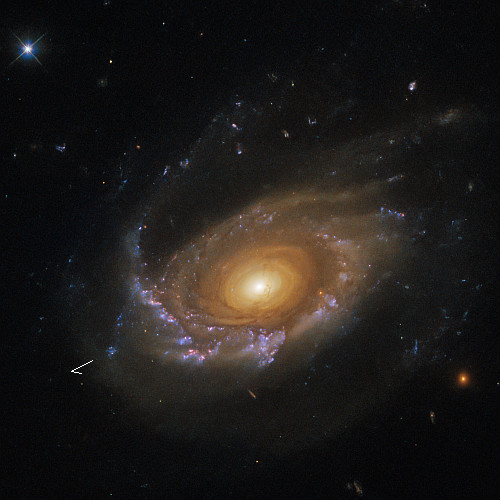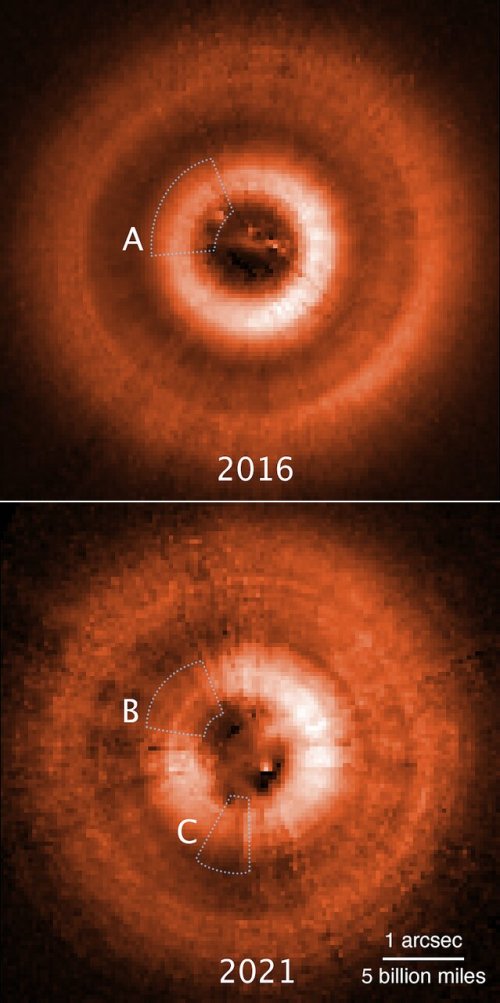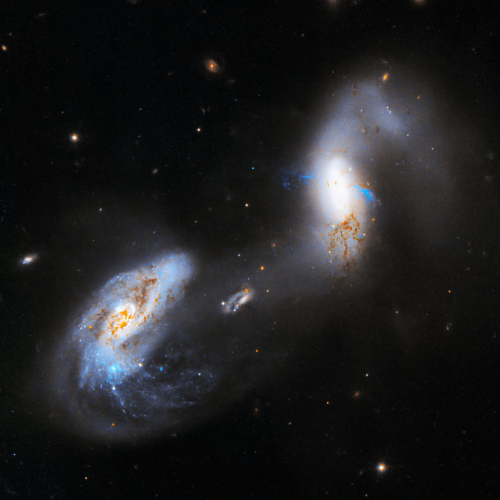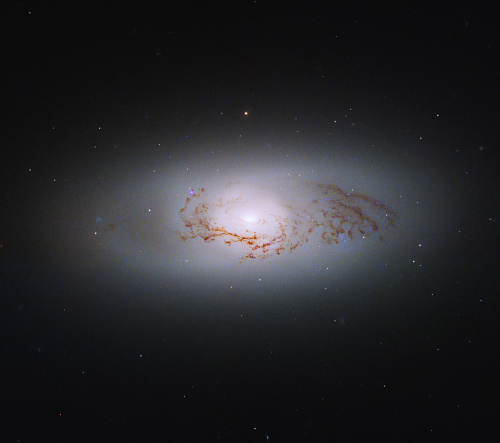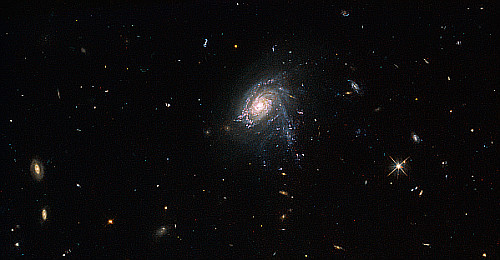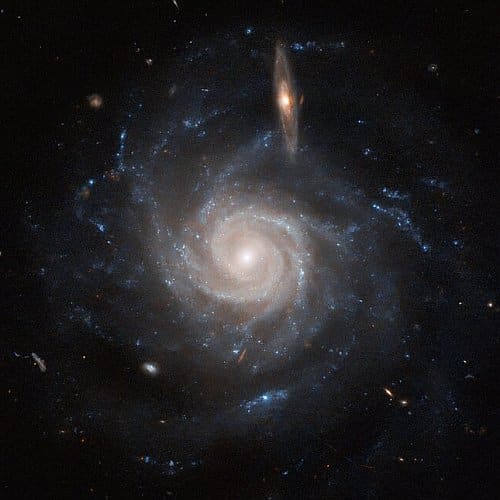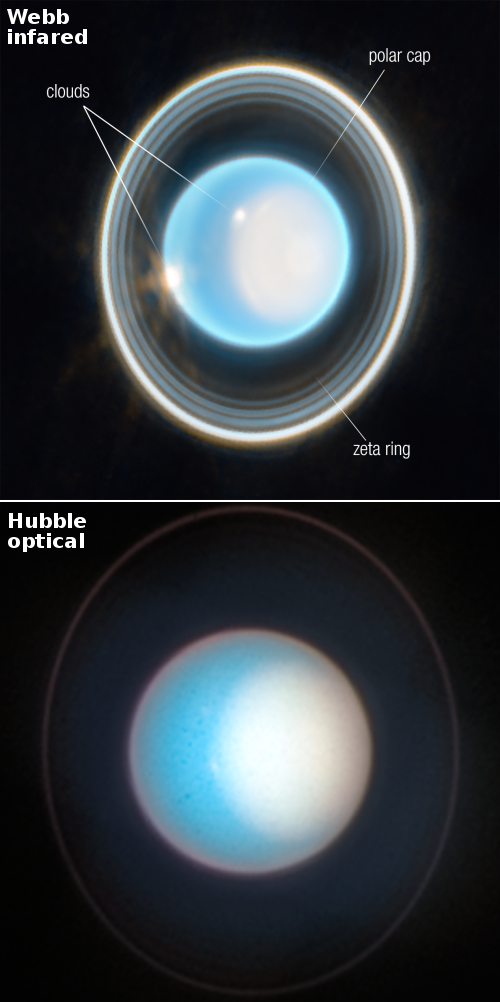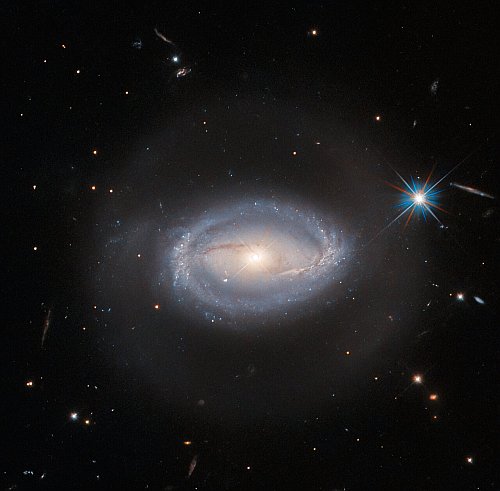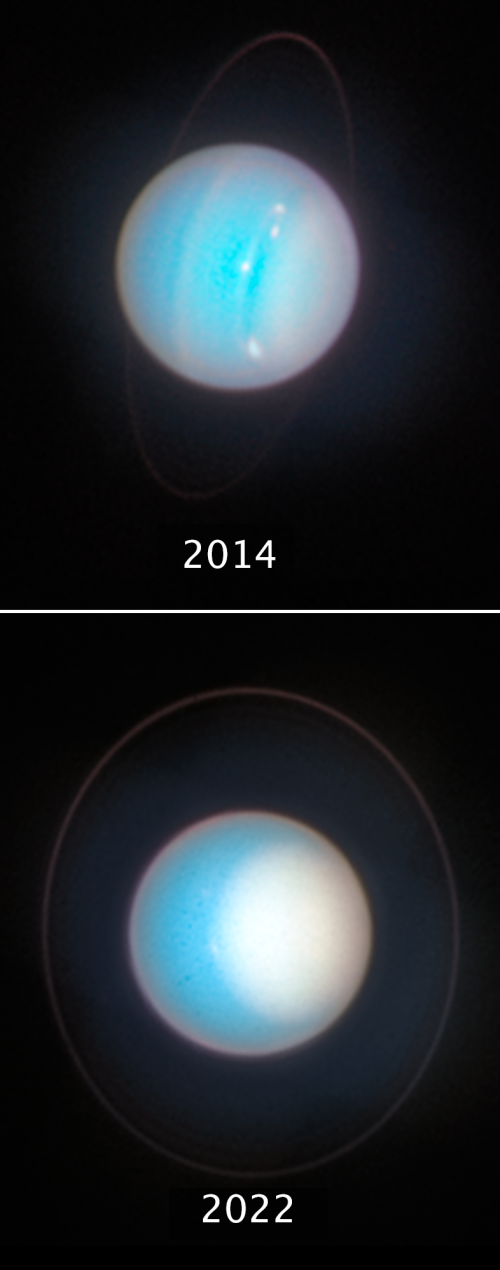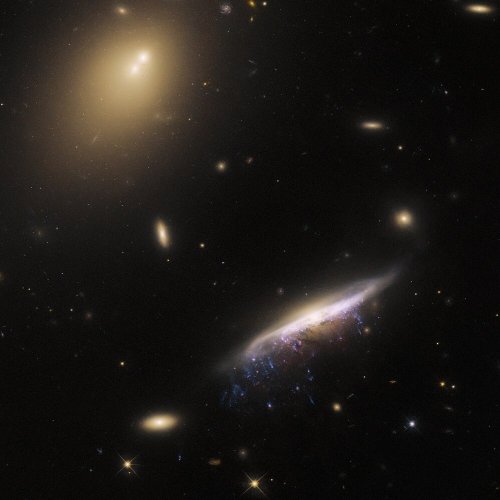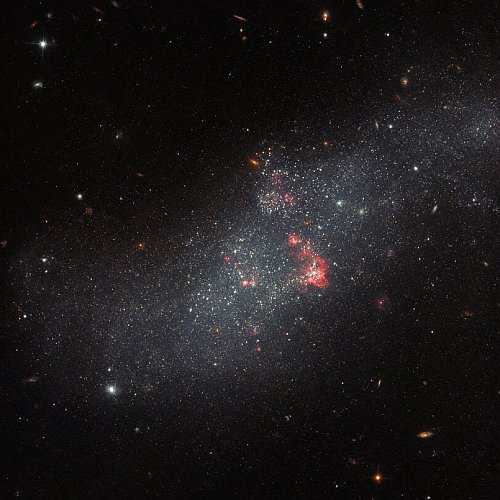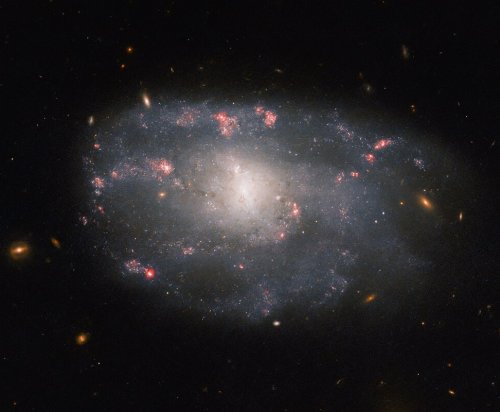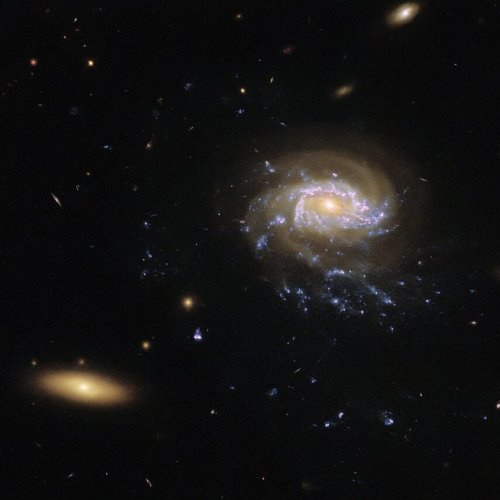Hubble snaps an ultra-violet view of Jupiter

Cool image time! Using the Hubble Space Telescope, scientists have taken a false-color ultra-violet image of Jupiter. That picture is to the right, cropped, reduced and sharpened to post here.
This newly released image from the NASA Hubble Space Telescope shows the planet Jupiter in a color composite of ultraviolet wavelengths. Released in honor of Jupiter reaching opposition, which occurs when the planet and the Sun are in opposite sides of the sky, this view of the gas giant planet includes the iconic, massive storm called the “Great Red Spot.” Though the storm appears red to the human eye, in this ultraviolet image it appears darker because high altitude haze particles absorb light at these wavelengths. The reddish, wavy polar hazes are absorbing slightly less of this light due to differences in either particle size, composition, or altitude.
The data used to create this ultraviolet image is part of a Hubble proposal that looked at Jupiter’s stealthy superstorm system. The researchers plan to map deep water clouds using the Hubble data to define 3D cloud structures in Jupiter’s atmosphere.
By comparing this ultra-violet image with Hubble’s optical view as well as Webb’s infrared view, scientists can study Jupiter’s atmosphere much like meteologists study the Earth’s, using multi-wave satellite observations.

Cool image time! Using the Hubble Space Telescope, scientists have taken a false-color ultra-violet image of Jupiter. That picture is to the right, cropped, reduced and sharpened to post here.
This newly released image from the NASA Hubble Space Telescope shows the planet Jupiter in a color composite of ultraviolet wavelengths. Released in honor of Jupiter reaching opposition, which occurs when the planet and the Sun are in opposite sides of the sky, this view of the gas giant planet includes the iconic, massive storm called the “Great Red Spot.” Though the storm appears red to the human eye, in this ultraviolet image it appears darker because high altitude haze particles absorb light at these wavelengths. The reddish, wavy polar hazes are absorbing slightly less of this light due to differences in either particle size, composition, or altitude.
The data used to create this ultraviolet image is part of a Hubble proposal that looked at Jupiter’s stealthy superstorm system. The researchers plan to map deep water clouds using the Hubble data to define 3D cloud structures in Jupiter’s atmosphere.
By comparing this ultra-violet image with Hubble’s optical view as well as Webb’s infrared view, scientists can study Jupiter’s atmosphere much like meteologists study the Earth’s, using multi-wave satellite observations.

